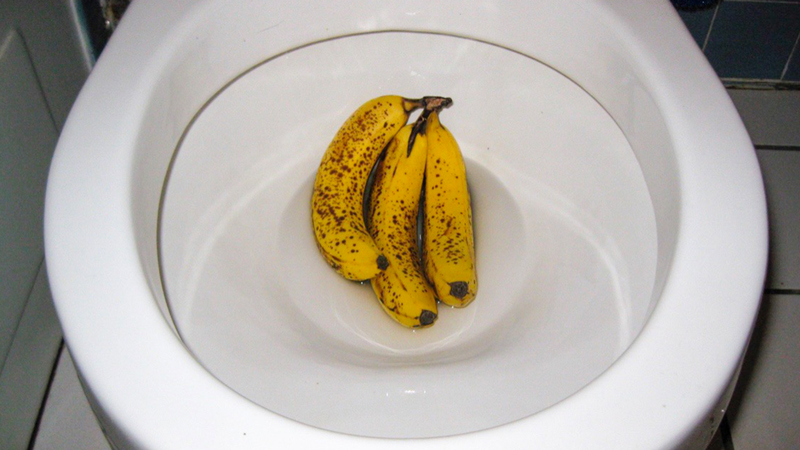Is it Safe to Flush Food in the Toilet?
Is it Safe to Flush Food in the Toilet?
Blog Article
Are you currently looking for facts involving Think Twice Before Flushing Food Down Your Toilet?

Introduction
Many people are typically faced with the dilemma of what to do with food waste, particularly when it pertains to leftovers or scraps. One typical concern that emerges is whether it's all right to flush food down the commode. In this short article, we'll look into the reasons why individuals may think about flushing food, the repercussions of doing so, and alternate approaches for proper disposal.
Reasons that individuals may consider flushing food
Lack of recognition
Some people may not know the possible damage caused by flushing food down the bathroom. They may erroneously believe that it's a safe practice.
Benefit
Purging food down the toilet may seem like a fast and easy service to taking care of undesirable scraps, particularly when there's no nearby trash bin available.
Negligence
In some cases, people may just choose to flush food out of sheer negligence, without taking into consideration the repercussions of their actions.
Consequences of flushing food down the bathroom
Ecological influence
Food waste that ends up in rivers can contribute to contamination and damage aquatic communities. In addition, the water used to flush food can strain water resources.
Plumbing issues
Flushing food can bring about clogged pipelines and drains pipes, triggering expensive plumbing fixings and hassles.
Types of food that must not be flushed
Fibrous foods
Foods with coarse textures such as celery or corn husks can get tangled in pipes and cause clogs.
Starchy foods
Starchy foods like pasta and rice can absorb water and swell, resulting in obstructions in pipelines.
Oils and fats
Greasy foods like bacon or cooking oils must never be purged down the bathroom as they can strengthen and cause clogs.
Correct disposal approaches for food waste
Utilizing a garbage disposal
For homes outfitted with garbage disposals, food scraps can be ground up and purged via the plumbing system. Nonetheless, not all foods are suitable for disposal in this manner.
Recycling
Specific food packaging products can be recycled, lowering waste and minimizing environmental influence.
Composting
Composting is an environment-friendly way to get rid of food waste. Organic products can be composted and made use of to improve dirt for gardening.
The relevance of appropriate waste administration
Minimizing environmental harm
Correct waste monitoring methods, such as composting and recycling, assistance decrease air pollution and maintain natural resources for future generations.
Shielding plumbing systems
By staying clear of the method of flushing food down the toilet, property owners can protect against pricey plumbing repair services and maintain the stability of their plumbing systems.
Final thought
Finally, while it may be alluring to flush food down the commode for benefit, it is necessary to understand the prospective effects of this action. By embracing appropriate waste administration methods and disposing of food waste properly, individuals can contribute to healthier pipes systems and a cleaner environment for all.
FLUSH FOOD DOWN THE TOILET?
FLUSHING FOOD CAN CAUSE BLOCKED DRAINS IN YOUR HOME
All of the plumbing fixtures in your home are connected to the same sewer pipe outside of your home. This outdoor sewer pipe is responsible for transporting all the wastewater from your home to the Council sewer mains. Even small pieces of food that go down the kitchen sink can cause problems for your sewer. It should therefore be obvious that flushing larger bits of food, such as meat, risks a clog in either the toilet itself or the sewer pipes. Flushing greasy food is even more problematic because oil coagulates when it cools, coating the interior lining of your pipes.
THE TOILET IS NOT A BIN
Food isn’t the only thing that people shouldn’t be flushing down the toilet. People use the toilet to dispose of all kinds of things such as tampons, makeup wipes, dental floss, kitty litter and even underwear. Water goes to great lengths to educate residents about the high costs and stress placed on wastewater treatment systems simply from people flushing the wrong stuff down the toilet. It costs taxpayers millions of dollars each year, and homeowners thousands in blocked drain repairs.
FLUSHING FOOD IS A WASTE OF WATER
Flushing food is a waste of our most precious resource - water. In June this year Level 1 water restrictions were introduced to protect water supply from drought conditions. Much of New South Wales continues to be affected by prolonged drought with recent figures revealing up to 97 per cent of the state remains in drought. Depending on whether you have a single or dual flush toilet, every single flush uses between five and 11 litres of water. In the current climate this is a huge amount of water to be wasting on flushing food that should be placed in the bin (or better yet, the compost).
https://www.jabplumbingsolutions.com.au/blog/can-you-flush-food-down-the-toilet

I am very excited about Think Twice Before Flushing Food Down Your Toilet and I hope you liked the entire article. If you enjoyed reading our article if you please make sure you remember to share it. Thanks a lot for being here. Come back soon.
Book Services Report this page